Ice
Ice by Anna Kavan is a surreal and haunting apocalyptic novel in which the world is gradually engulfed by a massive wall of ice caused by a nuclear war. Originally published in 1967 by Peter Owen, it would become Kavan's first major literary success. She died in 1968 before the publication of the first American Edition which includes an introduction by Brian Aldiss who was a friend of the author and instrumental in getting the novel published in the United States. Some have suggested that the recurring imagery of coldness and encroaching ice are metaphors for the author's own struggles with heroin addiction and mental illness. Ice is considered an example of "slipstream" fiction.
Hardcover. First American Edition, First Printing. Octavo, bound in blue cloth. New York: Doubleday & Company, 1970. #10867.
Fine in fine dust jacket with faintest hints of wear.

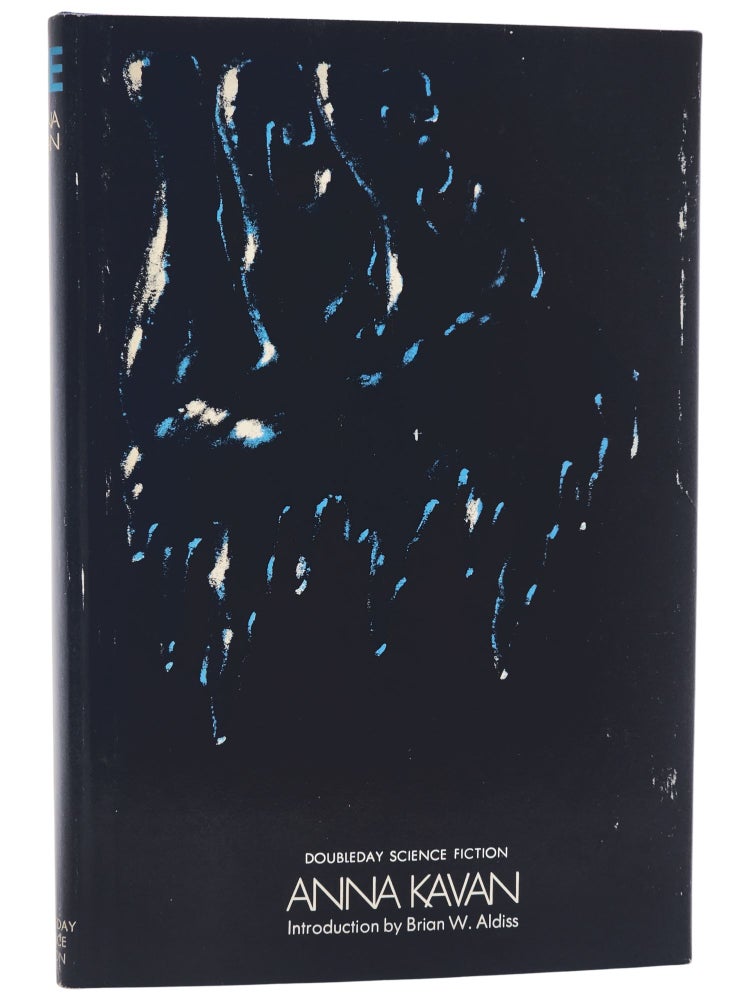
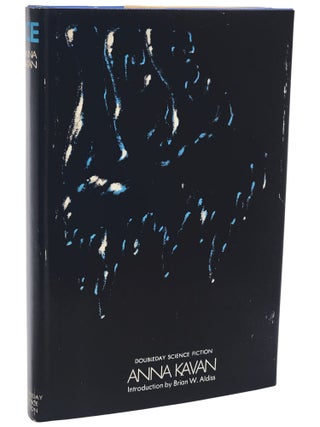
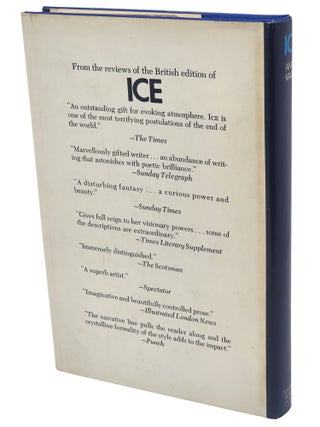


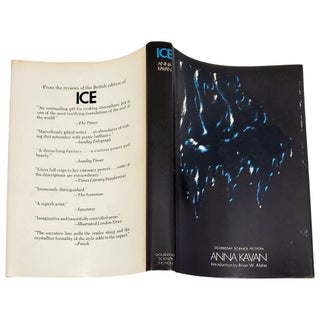
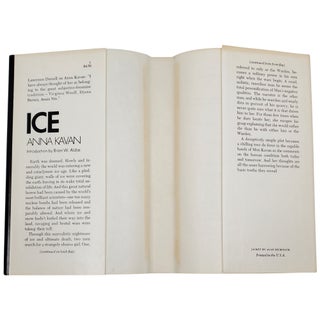

Ice is a novel written by Anna Kavan (pseudonym for Helen Emily Woods) and first published in 1967. The novel is a surreal and enigmatic work that blends elements of science fiction, dystopia, and psychological exploration. It is often categorized as a "literary masterpiece of dystopian fiction" and has gained a cult following for its unique and haunting narrative.
The story is set in a bleak and surreal world that is gradually encased in ice due to some unexplained cataclysmic event. The protagonist, referred to as the "man," becomes obsessed with a woman named "the girl." He embarks on a journey through this frozen landscape, encountering various surreal and symbolic scenarios along the way.
As the man's obsession with the girl intensifies, the narrative blurs the lines between reality and hallucination. The woman seems to represent an unattainable and distant figure, and the man's pursuit of her becomes symbolic of his search for meaning and connection in a world that is rapidly disintegrating.
Ice is known for its dreamlike and fragmented prose, which creates an atmosphere of unease and disorientation. The novel delves into themes of isolation, addiction, psychological instability, and the fragility of human relationships. It has been interpreted as an allegory for the anxieties and existential fears of the Cold War era, as well as a deeply personal exploration of the author's own struggles with mental health and addiction.
Anna Kavan's writing style in Ice is both haunting and poetic, and the novel's ambiguity encourages multiple interpretations. The narrative structure and the surreal elements contribute to a sense of detachment and confusion, mirroring the psychological state of the characters and the uncertain world they inhabit.
Ice is also considered an example of slipstream fiction. Slipstream is a literary genre that blends elements of speculative fiction (such as science fiction, fantasy, and dystopia) with mainstream literary fiction, creating a hybrid and often surreal narrative. Slipstream fiction tends to defy traditional genre boundaries and expectations, resulting in works that are both imaginative and thought-provoking.